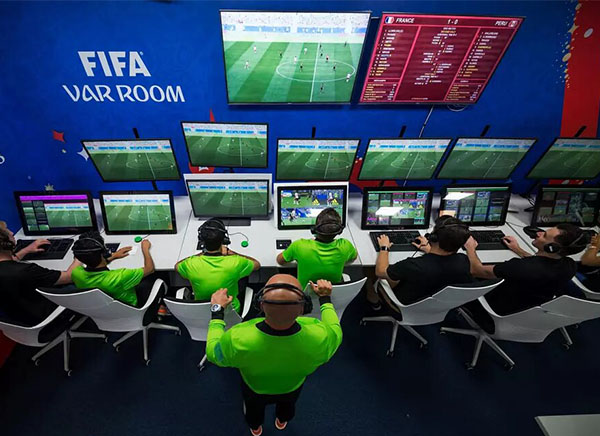
By Nilanjan Dey
When a football match is going sometimes it is really difficult for the referee to make out which call to give. This is where technology comes to assist in the form of VAR or video assistant referee.
The 2018 FIFA World Cup saw the effective usage of video match officials (VMOs), which were added in the 2018/2019 edition of the Laws of the Game. Since then, the technique has been used in more than 100 events across the globe.
There are four scenarios where the VAR team provides its help to the referee to make a decision:
The VAR team keeps a constant eye on the match looking for errors in the aforementioned scenarios and talks to the referee only when it sees a major mistake or a serious missed incident.
The 42 broadcast cameras available to the video assistance referee team include four ultra-slow motion cameras and eight super slow motion cameras. Slow-motion replays are typically employed in factual situations, such as to pinpoint the location or point of contact during a bodily offence. Normal-speed replays are used to make subjective decisions, such as the seriousness of an offence or whether or not a handball warranted punishment. The semi-automated offside technology’s camera feeds are also available to the VAR crew in addition to the broadcast cameras.
For the FIFA World cup Qatar 2022, the VAR team is situated at a centralised video operation room (VOR) in Doha from where it can support the referee. A fibre-optic network delivers all host broadcaster camera feeds from the eight stadiums to the VOR. Through an advanced fibre-linked radio system, the on-field referee at each stadium communicates with the VAR team.
The VAR team consists of the video assistant referee (VAR) and three assistant video assistant referees (AVARs). All video assistant referee team members are top FIFA video match officials. There are also three replay operators whose job is to select and provide the best camera angles.